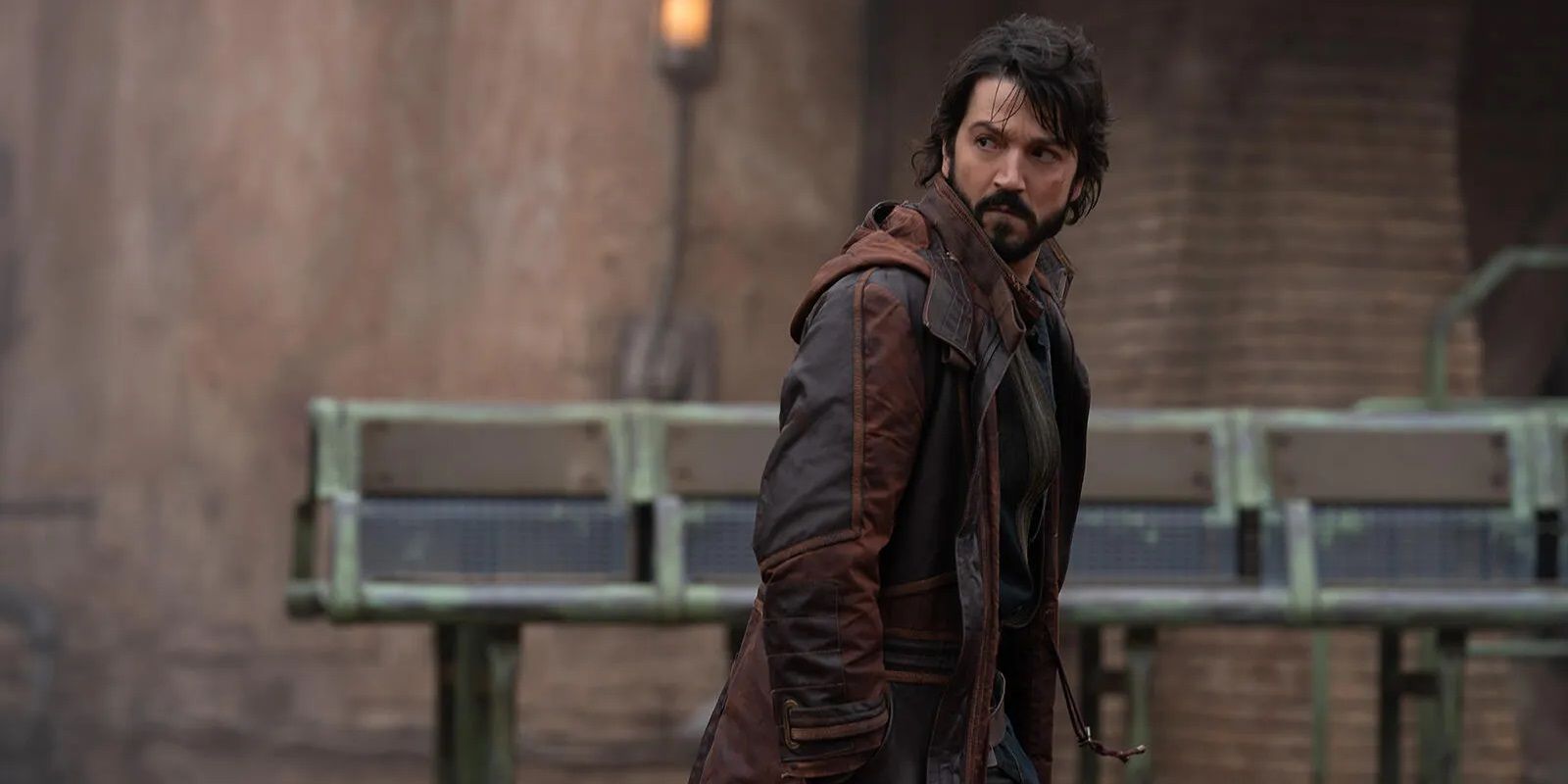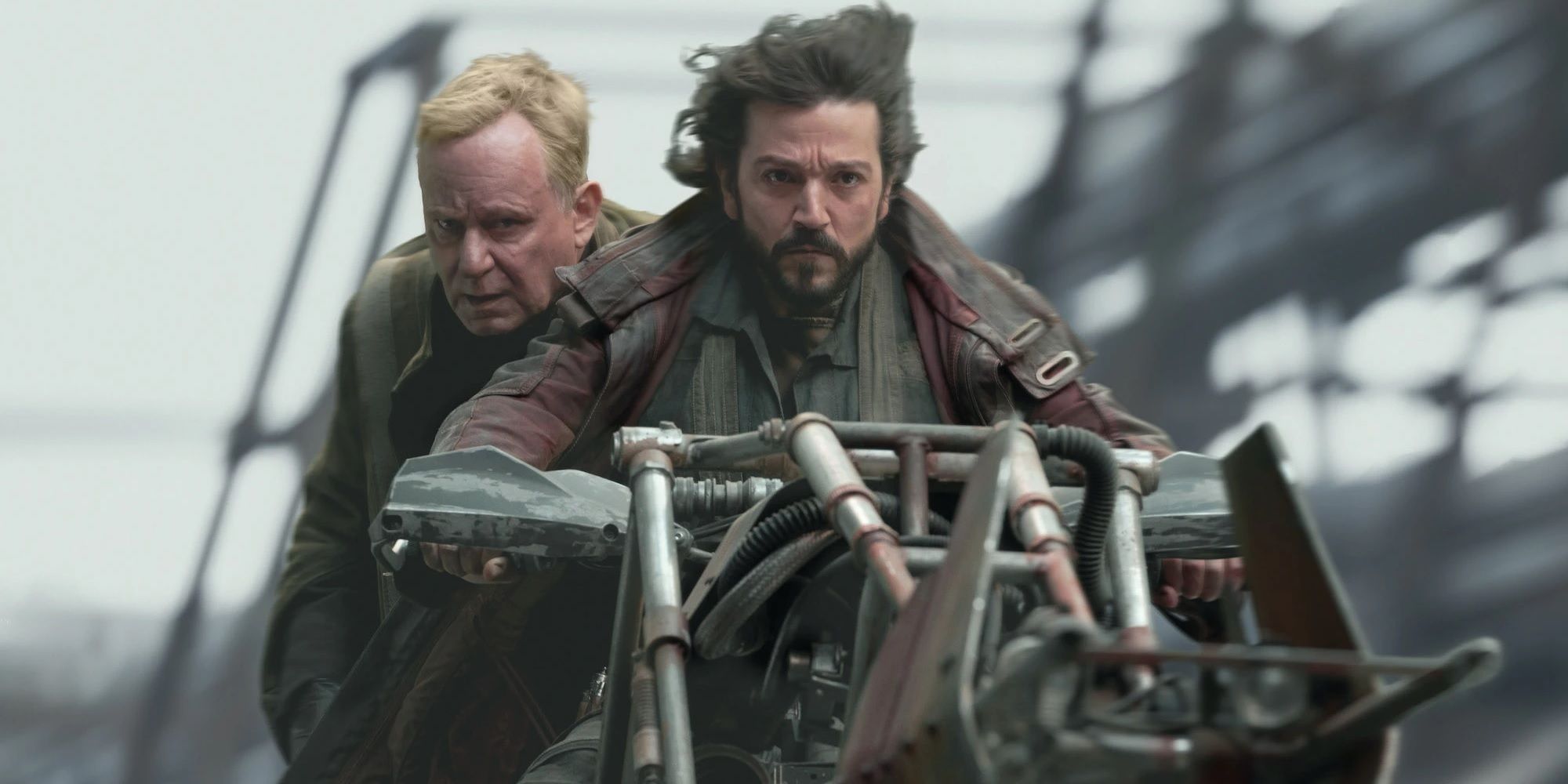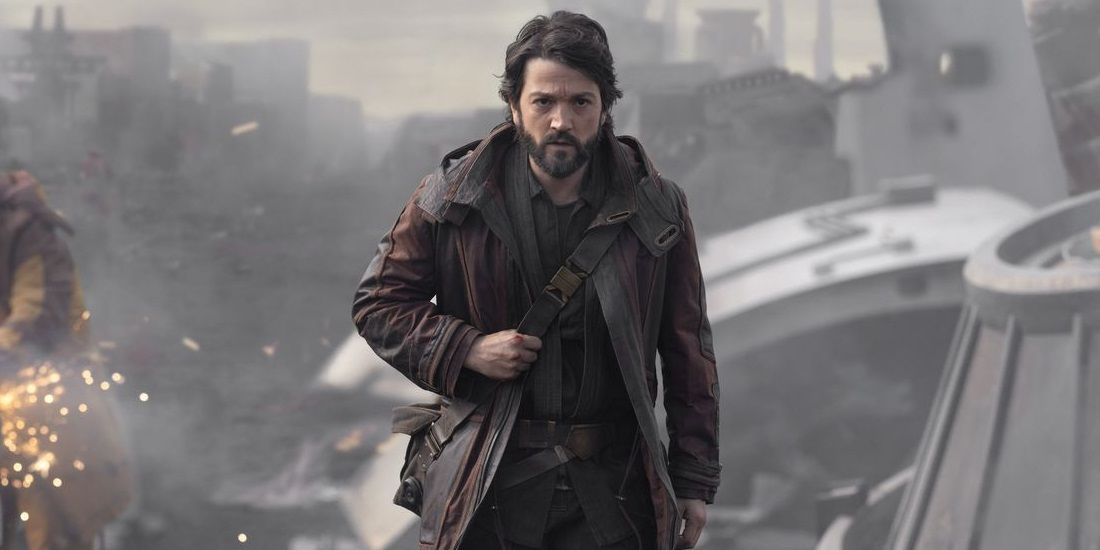Warning: This article contains spoilers for Andor.
Lucasfilm’s new Star Wars series Andor, based around the Rogue One character of the same name, has finally dropped on the streaming-waves of Disney+ with a three-episode premiere. The series is a breath of fresh air for a number of reasons. It explores the conflict between the Rebellion and the Empire on the ground level, taking the perspective of a low-level Rebel spy. It doesn’t rely on legacy characters and fan service to please audiences; it uses compelling characters and an engaging narrative. And it’s also a visual treat, because the filmmakers chose practical effects and real shooting locations over working with Lucasfilm’s fancy StageCraft CGI technology.
Ever since “The Volume” technology was pioneered for the making of The Mandalorian, Disney’s Star Wars streaming content has relied on it more and more. With elaborate video walls projecting already-completed CGI around the set, The Volume offers an easy, time-saving way to shoot VFX-heavy TV shows. It allows directors like Jon Favreau and Dave Filoni to shoot scenes set on Tatooine, Nevarro, and Tython all on the same day. It makes pre-production a lot more complicated than simply using greenscreens, because all the CGI needs to be created in advance, but it gives the actors something to react to during filming and it saves a ton of time and energy in post-production. But, as with any filmmaking innovation that saves time and effort, the end product suffers.
The Mandalorian only used the StageCraft technology when necessary, with practical sets filling in wherever possible. But on the expedited schedules of The Book of Boba Fett and Obi-Wan Kenobi, The Volume was used for almost every scene, lit and framed to accommodate the high-resolution screens on the walls of the set. As a result, those shows are let down by mediocre camerawork, flat, lifeless visuals, and a bland color palette. By using old-school filmmaking techniques instead of relying on The Volume, Andor recaptures the rough, gritty “used future” aesthetic of the original Star Wars trilogy.
Andor didn’t just use The Volume more sparingly than the other Star Wars shows; it didn’t use The Volume at all. At this year’s Star Wars Celebration, Andor executive producer Sanne Wohlenberg told IGN, “We haven’t been working with StageCraft at all for our show.” Diego Luna compared Andor’s production to George Lucas’ original 1977 space opera with “that kind of very theatrical way of shooting where stuff is actually there and you can interact with that.” Wohlenberg touted Andor as “the first Star Wars show for Disney+ that has not been leaning into that technology.”
With the StageCraft technology, filmmakers are limited to generic coverage with close-ups and mid-shots, broken up with the occasional computer-generated establishing shot. But on a real set, like the ones used to shoot Andor, the filmmakers can put the camera wherever they want and capture a much wider variety of shots. This freedom makes the cinematography and editing a lot more immersive. Instead of using computers to show the audience an approximation of an environment, Andor can use the omniscient eye of a camera lens to plant the audience right in the middle of that environment.
In the show’s inciting incident – Cassian’s self-defensive double homicide of two Pre-Mor employees – the raindrops that set the noir-ish mood aren’t computer-generated; the actors are being battered with real rainfall. In the flashbacks to young Cassian camping out with fellow Rebels in a forest, the camera is in a real forest. It’s not just green and brown pixels creating the illusion of a forest; the moss on the trees, the dirt on the ground, and the mist billowing through the air are all real. Much of the show's look can be attributed to production designer Luke Hull, who worked on HBO's Chernobyl. Like that show, Andor employs a gritty, industrial look that is far removed from the typical desert towns and Jedi temples of the previous series.
That’s not to say that there’s no CGI in the show at all. Obviously, when the script called for a character to go to space, the crew couldn’t just invent their own spacecraft and send their actors into the cosmos. But the Andor team only used CG effects when there was no other way to visualize what was in the script. They followed the Christopher Nolan model a lot more closely than the Marvel model. So many modern-day productions resort to CGI to visualize absolutely everything, even something mundane like an apartment or an office. In Andor, if it could be done for real, like a man clanging a stone with a couple of hammers in a clock tower, then it was done for real.
Forgoing the crutch of The Volume undoubtedly would’ve made the production of Andor a lot tougher than its fellow Star Wars streaming shows. The cast and crew had to move from location to location, building sets, making them look grimy and lived-in, and covering extras in otherworldly prosthetics, but the rewards are obvious. Andor is the first Star Wars content in years that actually looks and feels like classic Star Wars.



